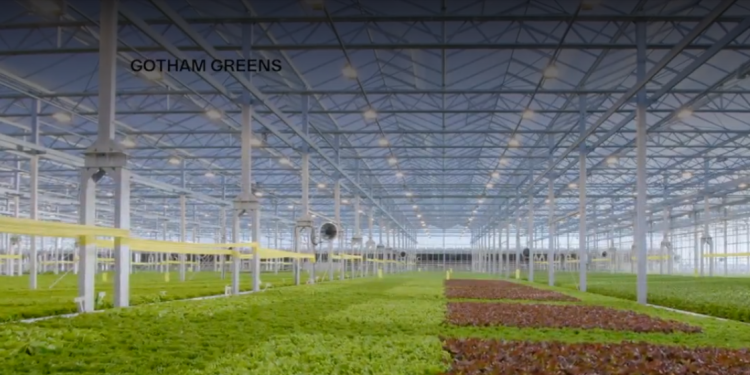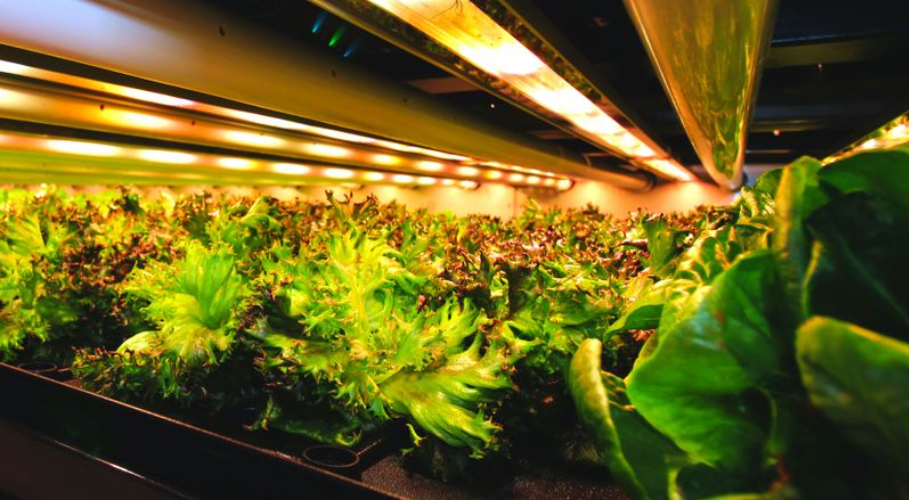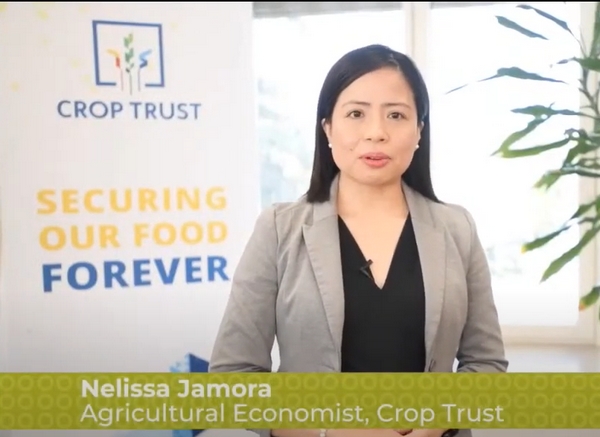A three acre greenhouse made of glass and steel is hard to miss along Interstate 80 in Davis. Tens of thousands of cars drive past it every day. A prominent sign on the building reads, “Gotham Greens.” A look inside provides a glimpse into what could be the future of farming.
Company co-founder and CEO Viraj Puri gave FOX40 a tour of the facility. Puri’s roots are in New York where Gotham Greens was founded about ten years ago to bring fresh greens to the Big Apple.
“And we actually operate a whole network of these facilities across the U.S.,” Puri said.
The Davis greenhouse, constructed in 2021, is the company’s first on the West Coast, and its largest, covering three acres.
“Yet we’re producing the crop yield of over one hundred acres,” Puri pointed out.
Instead of soil, the roots of each plant in the greenhouse are anchored to a small pod of peat moss, and they are planted in trays of nutrient-rich water. The technical term for this kind of farming is hydroponics. Compared to conventional outdoor lettuce growing, Puri said this method uses ninety-five percent less water.
“We capture all the irrigation water for re-use,” Puri said. “So we’re able to grow a full head of lettuce using approximately two or three gallons of water, while it can take up to forty gallons of water to grow that same head of lettuce out in the field.”
There are limits to what the company will allow news cameras to capture inside the facility. A lot of proprietary technology is at work there, in what is quickly becoming a competitive industry.
“We’ve got sensors that help track all the conditions: the light, the humidity, CO2, the oxygen, all these different variables that a plant needs to grow,” Puri explained. “And then our computer control systems will help turn equipment on and off to achieve those conditions.”
There are no changing seasons in a Gotham Greens facility. It is always growing season. According to the company, the greenhouse can produce more than six million heads of lettuce annually.
“We utilize natural sunlight to provide the photosynthesis that the crops need to grow. But we’ve got air conditioning systems, we’ve got heating systems,” Puri said.
The greens are thriving, and showing up on local grocery store shelves.
“They’re not having to deal with the hot weather, the cold weather, unseasonable rain or hail or wind,” Puri elaborated. “So they’re very coddled plants, as we like to say. And a happy plant makes for a healthy plant.”
The greenhouse is just a couple of miles away from the UC Davis campus. And through a partnership with the university, it serves as a kind of three-acre classroom for students studying the future of farming.
“We’re training, if you like, the next generation of farmers who will be going to companies like Gotham Greens,” Dr. Gail Taylor, a distinguished professor and chair of the plant sciences department at UC Davis, said.
Taylor said the university is also helping educate Gotham Greens employees.
“Things like shelf life, ensuring the best quality produce, and the conditions that the company might be using to ensure that,” Taylor explained.
Taylor also pointed out: UC Davis pioneered methods of farming that don’t require soil one hundred years ago. The difference in recent years is the technology that has made hydroponic farming profitable and feasible on a large scale.
“We can grow these crops more cheaply, Taylor said. “We can recycle water so that they have a place in the food supply chain. One of the keys is getting that special recipe of nutrients that the plants require absolutely spot on. And with many companies, that’s their big secret.”
Taylor said it is unlikely greenhouses will ever entirely replace outdoor farming. The average person in America eats about twelve pounds of lettuce per year, the professor pointed out.
“So we really rely on sustainable production systems outdoors too,” Taylor said. “Eighty-five to ninety-five percent of all of the lettuce in the U.S. is grown in California. So it’s a really important production system. And even in the outdoor systems, we’re learning how to do it much more effectively.”
But the indoor farms can be game-changers, growing clean, pesticide-free, nutritious foods in urban areas and food deserts – places where crops don’t easily grow outdoors.
“You think of those food miles, trucking and flying food around the country, around the world; that’s not great for the environment,” Taylor explained. “So suddenly with these indoor systems, we can place them where people need food. So we also cut down of food miles, which has a greenhouse gas cost. So it’s another way we can improve the environment.”
And lettuce is just the tip of the iceberg.
“As plant scientists, we suddenly have the power to reimagine plants, all sorts of foods, be it leafy greens or strawberries or tomatoes,” Taylor said.
“And so I think it’s really incumbent on us: farmers, entrepreneurs, technologists, policy-makers and academics to really innovate and come up with new forms of farming that use less water,” Puri concluded.
Gotham Greens owns ten acres at the Davis site and has plans to expand the three-acre greenhouse.
A source: https://fox40.com










